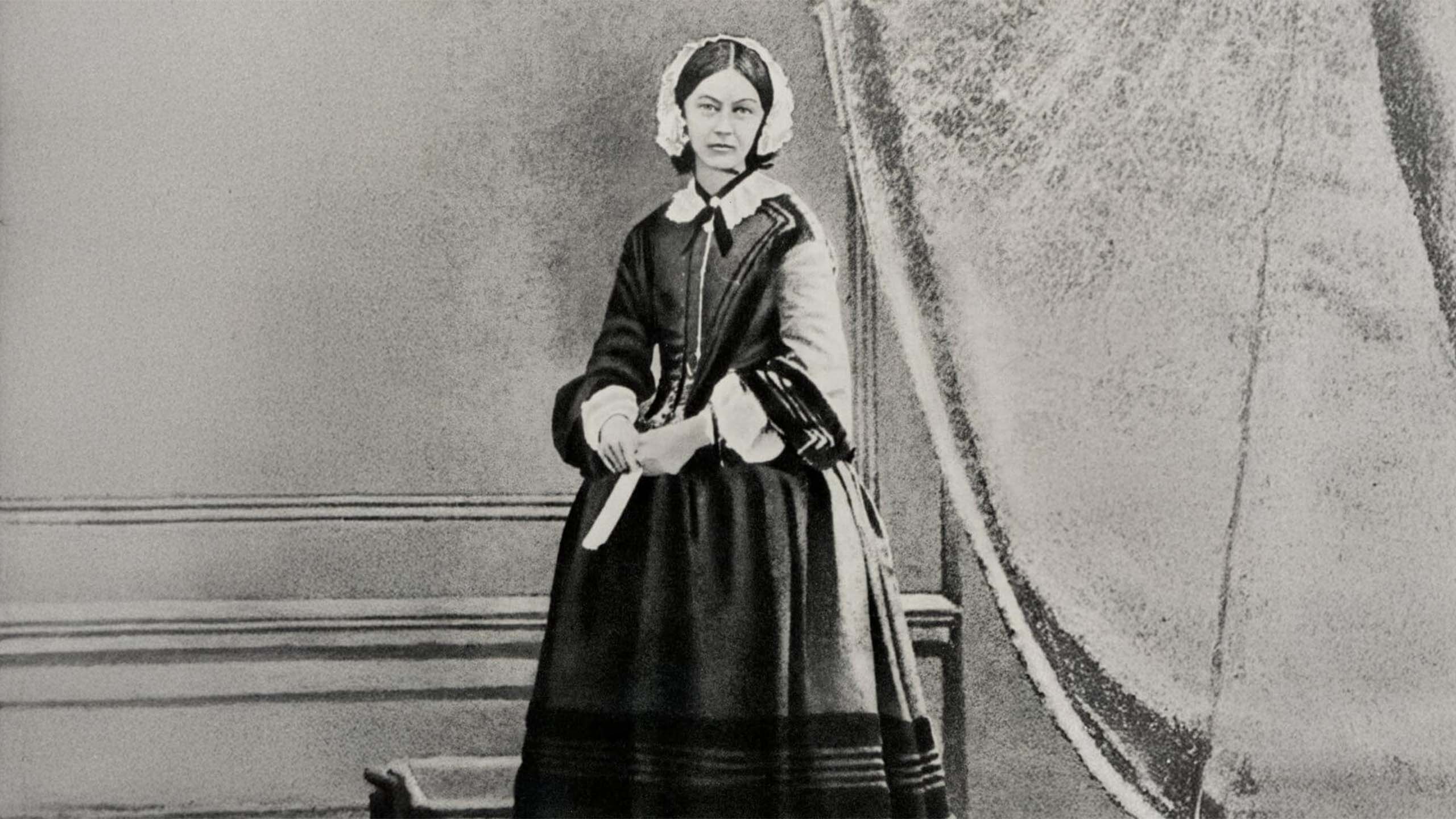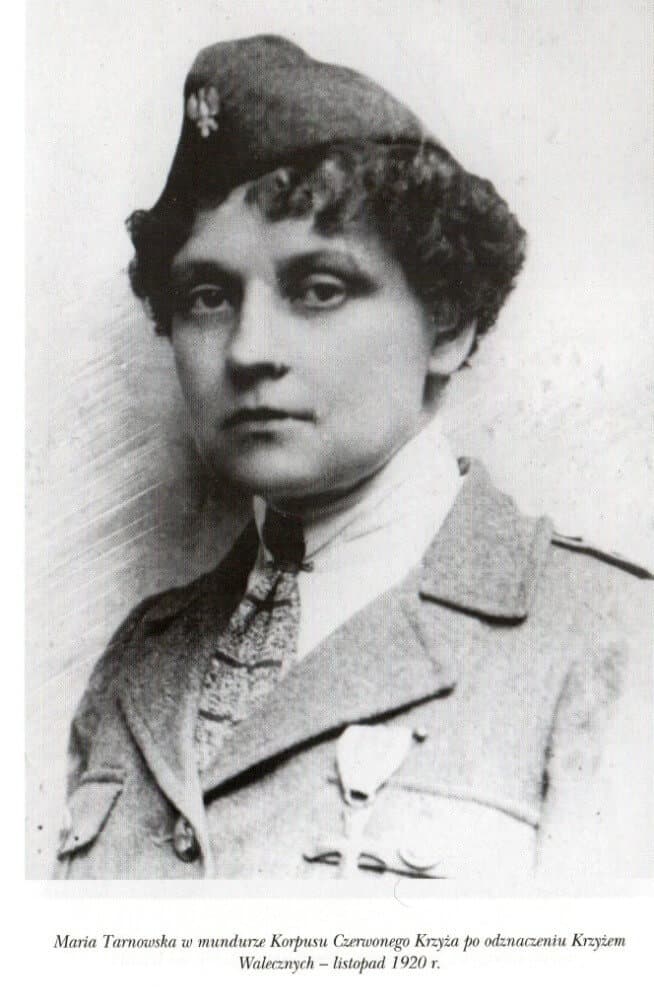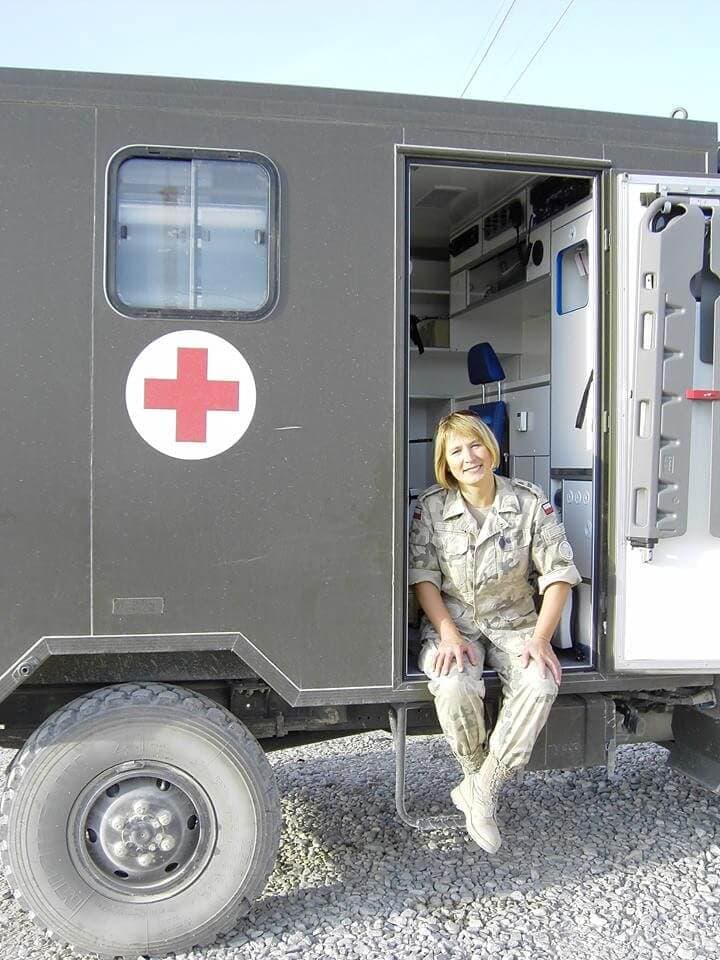During its 100-year activity, the International Committee of the Red Cross honored 102 Polish nurses associated with our organization with the Florence Nightingale Medal.

Florence Nightingale was an English nurse, social reformer, and writer. She was known as the "Lady with the Lamp". Nightingale established the foundations on which the modern image of the nurse is based. Her merit is defining methods and ways of caring for the sick and injured. In 1860, she founded the first nursing school in London at St. Thomas' Hospital – The Nightingale Training School (currently: The Florence Nightingale School of Nursing and Midwifery). She is considered the creator of modern nursing.

The Florence Nightingale Medal was established by the International Committee of the Red Cross and awarded on the centenary of Florence Nightingale's birth on May 12, 1920. The first Polish nurse to receive this medal was Countess Maria Tarnowska in 1923, and the most recent is Anna Kaczmarczyk, awarded in 2017.
The first laureate, Countess Maria Tarnowska, began her nursing activities quite by accident in 1913. At that time, she was with her husband Adam Tarnowski, the Austrian diplomat, at a diplomatic post in Sofia. During the outbreak of the First Balkan War, wanting to feel helpful, she enrolled in a nursing course at the local hospital. This decision influenced her entire later life. During World War I, she volunteered in Vienna as a paramedic to work for the Red Cross and went to the front. For some time, she worked at a hospital in Krakow, organized by the Jagiellonian University for the First Krakow Corps. In 1919, in Warsaw, thanks to her own resources and privately obtained donations, she co-organized a field hospital – by then the Polish Society of the Red Cross, where she became a qualified nurse. In 1920, Tarnowska and her subordinates participated in the Polish-Bolshevik War, for which she was awarded the Cross of Valorous. After the war, she joined the Red Cross, with which she devoted her entire professional and social life.

In her memoirs, she wrote: I joined the Red Cross and engaged in nursing because it was the only occupation that allowed me to be helpful to others (M. Tarnowska, The Future Will Show…)
After World War I, a difficult time of demobilization for nurses began. Countess Maria Tarnowska, with great sensitivity to the moment, began taking actions within the Red Cross related not only to maintaining but also to developing nursing. One of her initiatives was to fund a "Home" for nurses at the Red Cross Hospital in Warsaw, where supplementary courses were organized. These were the beginnings of the first national, qualified nursing staff. At that time, at the request of the Management Board of the Polish Society of the Red Cross, in 1923, Tarnowska was awarded the international Florence Nightingale Medal. Maria Tarnowska was the first Pole, a nurse, to be honored with this distinction. Thus, her activity in nursing and organizing hospitals during World War I was primarily appreciated.
The last nurse awarded in 2017 is Mrs. Anna Kaczmarczyk. The recipient from last year is a master's degree in nursing and a lieutenant in the Polish Army. She began her service as the first woman – soldier in the structures of the assault company of the 6th Airborne Brigade in Krakow ("red berets"). She was also the first woman-soldier to jump with a parachute. She participated in stabilization missions in Bosnia and Herzegovina and in Afghanistan. She was involved in medical evacuations by air, taking care of patients and veterans. She currently works at the Military Preventive Medicine Center in Krakow.

The International Committee of the Red Cross appreciated Mrs. Anna's courage, selflessness, and competence. The difficulty of the mission she has performed for many years is evidenced by her memories. She recalls her work on the mission in Ghazni: "It was a difficult mission, longing for family, difficult terrain, harsh climate, isolation, and the constant, all-encompassing danger. Many injured soldiers and the helplessness when, despite great effort, it was not possible to save a soldier, the pain, depression, and sadness and mourning for the loss of each of them. The worst was when a soldier, after a mine explosion, looked with a terrified gaze and asked if he definitely had both legs and if they would definitely not be amputated, and the request to call his wife, his children, that he is injured but lives... I remember the day when my colleague had both arms shot off by a sniper. He required constant medical care in the military hospital in Bagram. Then we received news about the soldiers who died in the Rosomak..., I remember the days when there were shellings of the base, and one could not always leave patients and run to the shelter... there were many such days. To this day, I have some situations in front of my eyes, memories return, more of the bad than the good."
After returning from the mission, Mrs. Anna Kaczmarczyk worked for three years in the Medical Evacuation Team as an anesthesiologist nurse. Daily, she evacuated injured soldiers from the mission areas by air. Most evacuations took place on board a Casa C-295 aircraft, where LSTAT stretchers and two intensive care sets were installed. The most evacuations and the most serious cases were injured soldiers and civilian workers from Afghanistan. It was a very responsible, satisfying work for Mrs. Anna: "...a great relief when after a few-hour flight, we most often landed in Warsaw and handed over patients in serious but stable condition..., awareness that you can help someone, provide support not only medically but also psychologically. Because in reality, usually, the first person who most often reaches the wounded soldier on the mission is a nurse, and this first contact is so important for that wounded person. Soldiers on missions have a huge trust in nurses, but they also forget that we also need support, that we miss home, that we cannot only listen and support but also need support. PTSD also affects nurses.

Międzynarodowy Komitet Czerwonego Krzyża docenił odwagę, ofiarność i kompetencje Pani Ani. Jak trudna jest misja, którą pełniła przez wiele lat – świadczą jej wspomnienia. Swoją pracę na misji w Ghazni wspomina tak: „Była to trudna misja, tęsknota za rodziną, trudny teren, ciężki klimat, izolacja i nieustannie, wszechpanujące zagrożenie. Mnóstwo rannych żołnierzy i ta bezradność, gdy mimo ogromnego wysiłku nie dało się żołnierza uratować, ból, przygnębienie i smutek i żałoba po stracie każdego z nich. Najgorsze było to, gdy żołnierz po wybuchu miny-aidika, patrząc przeraźliwym wzrokiem pytał, czy na pewno ma obydwie nogi i czy na pewno nie będą one amputowane oraz prośba, by zadzwonić do żony, do dzieci, że jest ranny ale żyje …. Pamiętam dzień, w którym mojemu koledze snajper przestrzelił obydwie ręce. Wymagał on stałej opieki medycznej w szpitalu wojskowym w Baggram. Wtedy dotarła do nas informacja o żołnierzach, którzy zginęli w Rosomaku…, pamiętam dni w których były ostrzały bazy i nie zawsze można było zostawić pacjentów i biec do schronu… było wiele takich dni. Do dzisiaj niektóre sytuacje mam przed oczami, wracają wspomnienia, więcej tych złych niż dobrych.”
Po powrocie z misji Pani Anna Kaczmarczyk pracowała przez 3 lata w Zespole Ewakuacji Medycznej jako pielęgniarka anestezjologiczna. Na co dzień zajmowała się ewakuacją drogą powietrzną rannych żołnierzy z rejonów misji. Najczęściej ewakuacje odbywały się na pokładzie samolotu Casa C-295, gdzie były zamontowane nosze LSTAT i dwa zestawy do intensywnej terapii. Najwięcej ewakuacji i najcięższe przypadki to byli ranni żołnierze i pracownicy cywilni z Afganistanu. Była to bardzo odpowiedzialna, satysfakcjonująca dla Pani Anny praca: „…wielka ulga jak po kilku godzinnym locie, lądowaliśmy najczęściej w Warszawie i przekazywaliśmy pacjentów w stanie ciężkim, ale stabilnym …, świadomość, że można komuś pomóc, udzielić wsparcia nie tylko medycznego, ale również psychicznego. Bo tak naprawdę z reguły pierwszą osobą, która najczęściej dociera do rannego żołnierza na misji jest pielęgniarka i ten pierwszy kontakt jakże ważny jest dla tego rannego. Żołnierze na misjach mają ogromne zaufanie do pielęgniarek, ale też zapominają, że my również potrzebujemy wsparcia, że tęsknimy, że nie możemy tylko słuchać i wspierać, ale także potrzebujemy wsparcia. PTSD również dotyka pielęgniarki”
Facts about the Polish Red Cross
Only after the fourth request to the International Red Cross was the Polish Red Cross recognized on the international stage.
The beginnings of blood donation in the Red Cross date back to 1935, which took place 83 years ago.
If the borders of Poland had not been changed after World War II, the 100th anniversary of the Polish Red Cross (PCK) would have been celebrated with the Lviv, Volhynian, and Wilno branches, which are still active today but under the structures of different state associations.
The employees of the Polish Red Cross carried out the exhumation of Polish officers murdered in the Katyn Forest while also being responsible for creating the official Katyn Lists
The Red Cross movement and its foundations were the source for the establishment of sanitary services for wounded soldiers under the names Polish White Cross and Polish Green Cross.
Over the years, the rules for statutory financing of the PCK's activities have changed, as has our role and position within the state.
The PCK enjoyed immense public trust during the Second Polish Republic, and the most important figures in the state always spoke about our organization with the utmost respect.
To this day, in Tarnów, Małopolska, there is a nearly 100-year tradition of parades through the city organized on the occasion of the Polish Red Cross Week.
On February 8, 2018, it was 50 years since the establishment of the badge of the Honorable Blood Donor
On February 8, 2018, it marked 50 years since the establishment of the badge of the Meritorious Honorary Blood Donor
PCK never accepted any gratifications and did not support the Nazi authorities, thereby exposing itself to severe consequences.
The Polish Red Cross was the initiator of healthcare in rural areas during the interwar period and the establishment of the first village health centers.
PCK was involved in the construction of the Marshal Piłsudski Mound in Sowińca in Krakow in 1936
At the beginning of 1919, within the structures of the newly established Polish Red Cross Society, 3 District Branches of the PTCK were created: for Galicia, the Grand Duchy of Posen, and Silesia.
During its 100-year activity, the Polish Red Cross, the International Committee of the Red Cross, honored 102 Polish nurses associated with our organization with the Florence Nightingale Medal.
The Polish Red Cross was the organizer of parachuting courses
Did two Polish doctors working at the Red Cross hospital during World War II save more lives than Oskar Schindler?
There existed simultaneously the Polish Red Cross and the Polish White Cross, whose president was Helena Paderewska.
There was a time in the history of PCK when, legally, two or even three Main Boards of PCK operated simultaneously.
Help us endlessly
Thanks to the kindness and support of our Donors, we can help children, seniors, support medical rescuers, promote the idea of blood donation, and implement many other projects that save lives in times of conflict or humanitarian crises. Every donation and every form of support is significant because the Polish Red Cross connects those in need with those who want to provide help. Let’s help together!
See also
The Polish Red Cross was the organizer of parachuting courses.
At the PCK Nursing School in Warsaw, located at Smolna 6, a parachute training course was organized for the female students of the school in 1938. The curriculum included not only vocational subjects but also military-themed subjects.
In early 1919, within the structures of the newly established Polish Red Cross Society, 3 Regional Branches of the Polish Red Cross Society were created: for Galicia, the Grand Duchy of Posen, and Silesia.
As of August 1, 1919, the organizational structure changed and 4 Regional Committees were already functioning: Lesser Poland, Greater Poland, South-Eastern, and Polesie-Minsk. Our organization as a whole will celebrate its 100th anniversary, however, the history and operational period of individual local branches differ.
You are currently viewing a page filtered by content from the department. Cała PolskaIf you want to view content from Cała Polskaclick the button